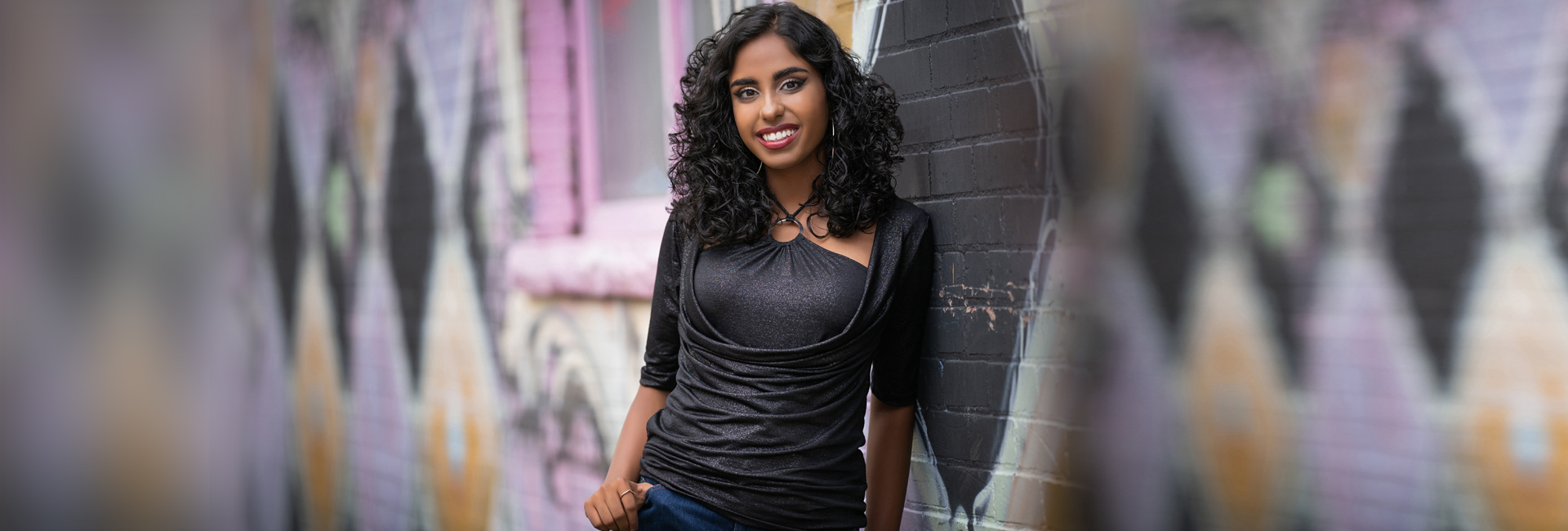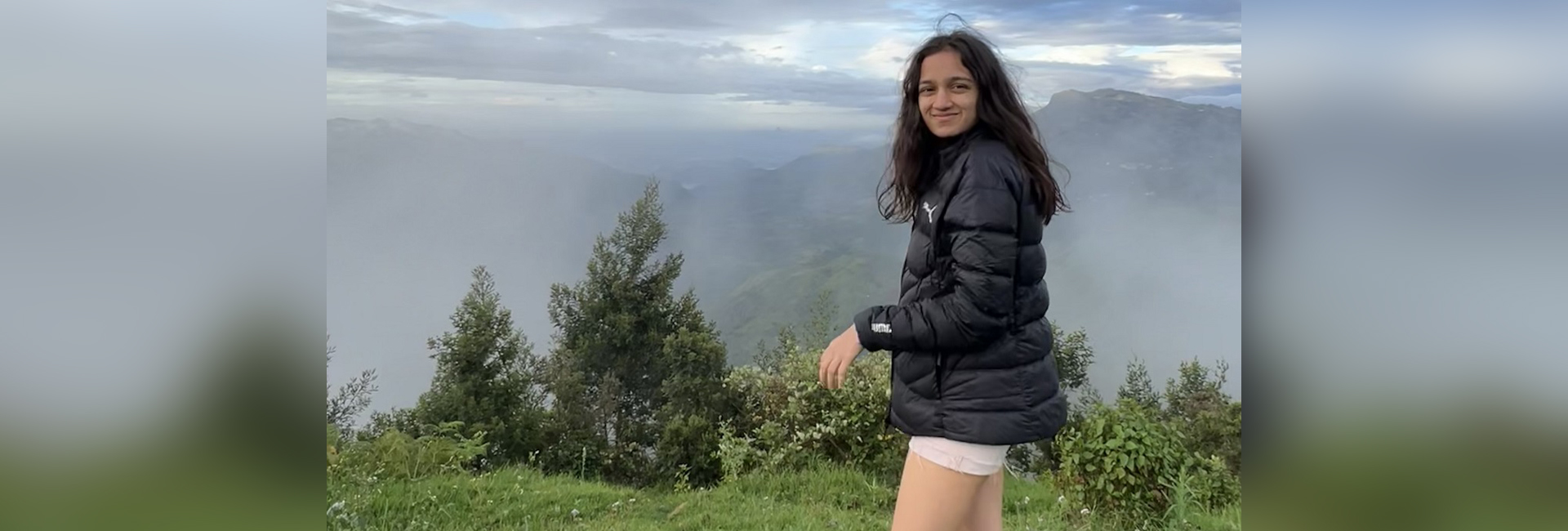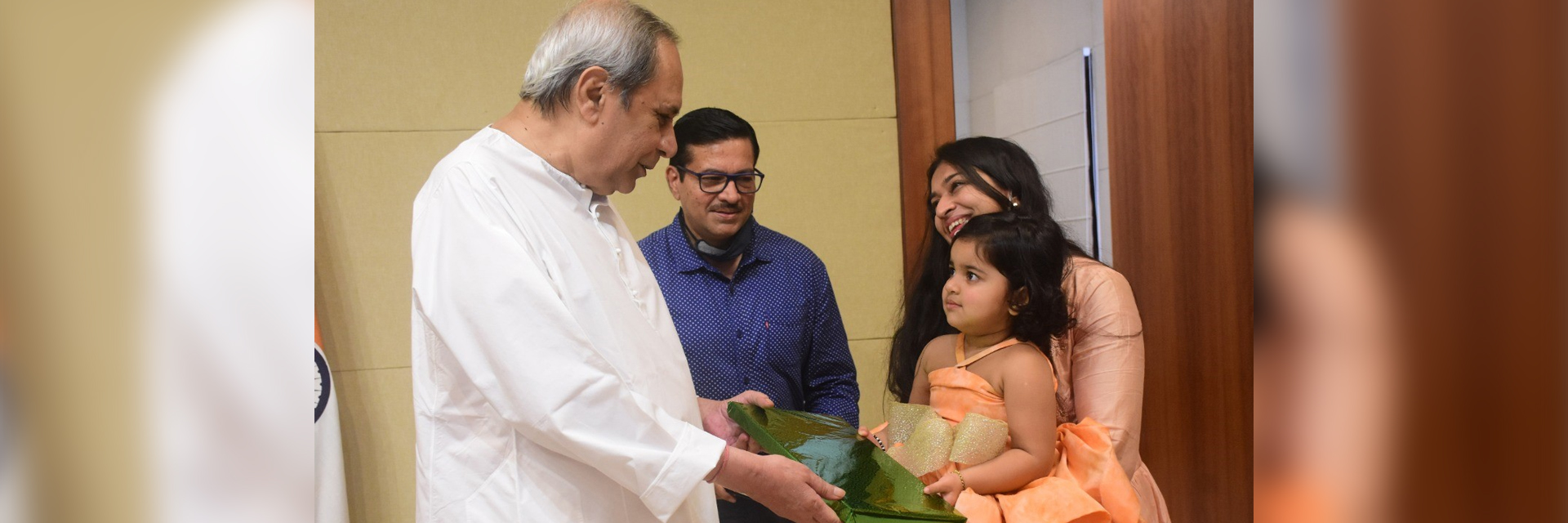(August 6, 2022) About five minutes into the video call with Rishika Karthik, I notice a beautiful painting hanging right behind her. Depicting several masked people, a small note on the canvas read, “I’m not fine.” Upon enquiring about the piece, she quips, “Oh! This is something I drew during the lockdown, its called Welcome to the Masquerade. I noticed that along with the physical mask, people also wore a metaphorical mask that stifled their individuality. Many people put on a facade to fit in the society. I think, masking our emotions and vulnerability strips us of true human connection.”
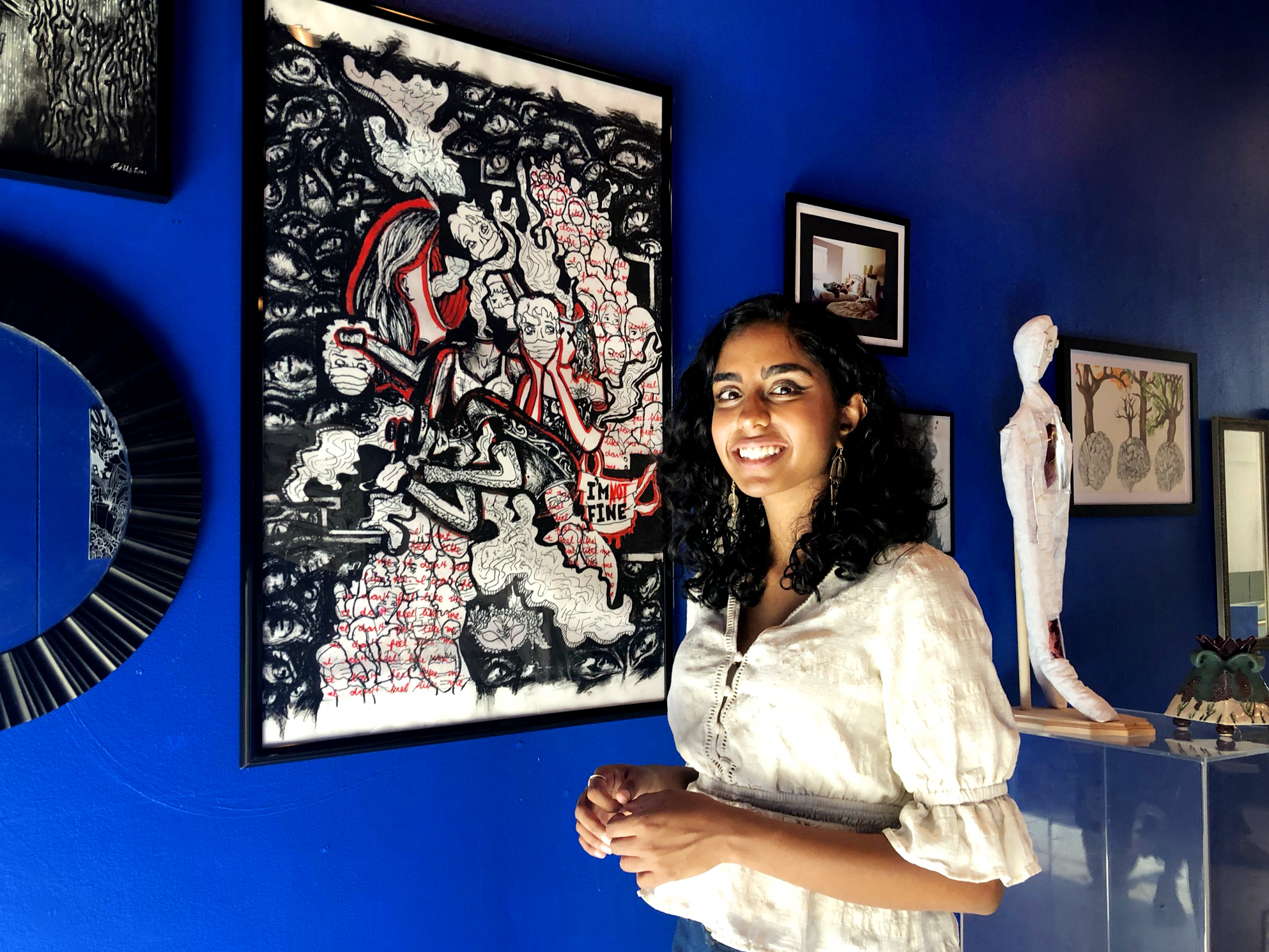
Rishika Karthik with her artwork, Welcome to the Masquerade
Just 17 but wise beyond her age, Rishika is a creative activist, who is committed to increasing artistic and educational opportunities for blind and visually-impaired students since 2018. And for her service to the community, this Tamil Nadu native was presented with the USA President’s Volunteer Service Award 2022. “I had just woken up and rushed to get ready for the school when I read the mail announcing the win. It is such a big honour for me. Especially because the list includes some very impressive youth, who are working for the community. I cannot wait to collaborate with the other awardees on some project,” says Rishika, as she connects with Global Indian from Colorado.
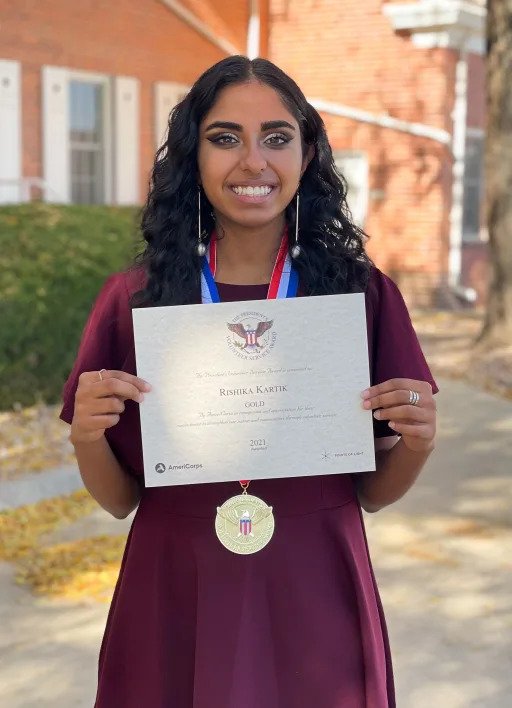

The artist recently won the USA President’s Volunteer Service Award 2022
A proud member of the National Federation of the Blind (NFB), Rishika founded a project called Vision of the Artist’s Soul (VAS), to create a comprehensive art education programme for blind and visually-impaired youth. The youngest recipient of a two-year Arts in Society Grant Award, Rishika advocates for policies and infrastructure for a more accessible society. Speaking at several panels and events, the young artist has been raising her voice for the rights of blind and visually-impaired individuals to travel independently. Gearing up for her freshman year at Brown University, Rishika plans to take up disability studies for her bachelor’s.
Of colours and art
Twenty years ago, Rishika’s parents moved to the United States of America in search of better employment opportunities. Born in Colorado, Rishika was a curious kid who was intrigued by everything she saw. “My parents often tell me that I asked the question ‘why’ more than anyone they have ever met in their entire lives. But I was a curious kid, who questioned everything,” laughs the artist. “When I was growing up, I felt like I was too American in the Indian community and too Indian in the American community. Now, however, I understand that being multi-cultural and multi-lingual allows me to look at things from more than one perspective.”
Struggling with her identity as a child, Rishika found solace in art, where she could express her thoughts and emotions without any hesitation. “I taught myself how to sketch and colour. Blank pages became a sea of opportunities for me,” she shares.
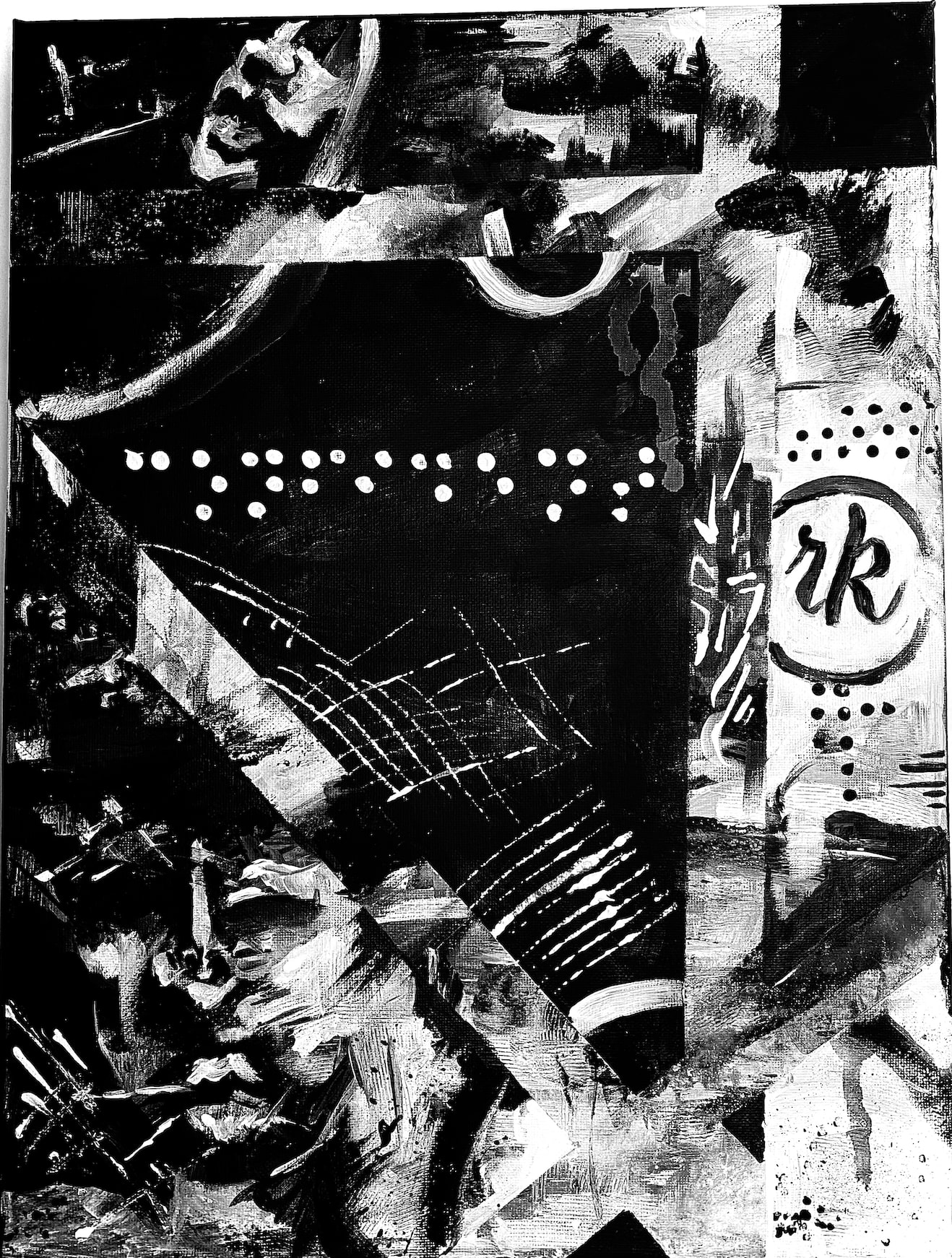

Rishika’s artwork, Blind Vision. The braille engraved on the artwork reads ‘Confident’.
A bright student of St. Mary’s Academy, Rishika credits her teachers for motivating her to help the kids with disabilities in her locality. “My teachers instilled the value of how education can transform lives, and I really wanted to serve the less fortunate people. My mother also comes from an educational background, so I was very inspired by watching her tutor kids in our home,” the artist shares.
Motivated and curious, Rishika approached the Director of Service Learning at her school for volunteering opportunities and learned about the various organisations working to help the visually-impaired kids in her locality. “It was a community that I had never interacted with before. So, when I first went, I was a bit hesitant, but upon meeting them I fell in love with their warmth. I learned so many new things about the community and the challenges that they faced doing the things that are quite simple for us,” says Rishika, who learned braille to help these students better.
From visual to tactile
While they had other mediums to study and learn, one thing that grabbed Rishika’s attention was the lack of art or colours in these kids’ lives. “During my research, I learned about Tactile Art Club, run by Ann Cunningham, who later became my mentor. I realised that tactile art is just as important and powerful, as visual art, and decided to incorporate it into my volunteer work. The results were a revelation for me – it helped many blind students explore new artistic possibilities,” shares the artist, who focussed on enhancing the participants’ experiences with ceramics, using many tools to form a variety of textures and forms.
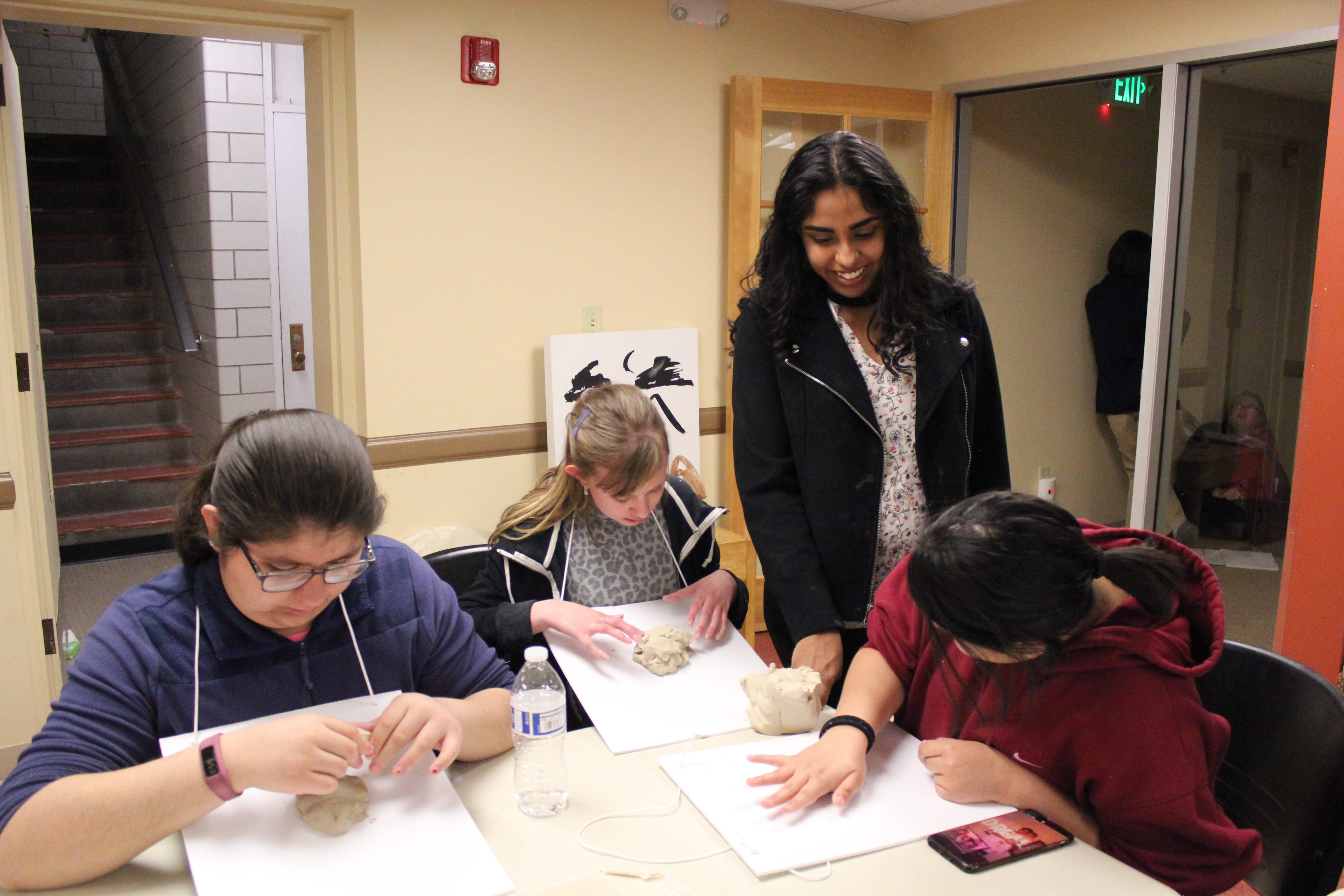

Rishika at the art workshop
In January 2020, Rishika became the president of the Tactile Art Club. Although they were making good progress, COVID came as a disrupting guest. “It was hard initially, as no one knew what to do or how to connect to the students. But eventually, we started our workshops and classes online.” And that was the turning point – for Rishika and the Tactile Art Club. The online classes attracted visually impaired students not just from Colorado, but across the world. In December that year, the club had twenty-eight participants – all from diverse backgrounds. “It was quite a learning experience. From using just ceramics in our class, we started experimenting with a variety of interesting materials, such as tinfoil, pipes, and paper.”
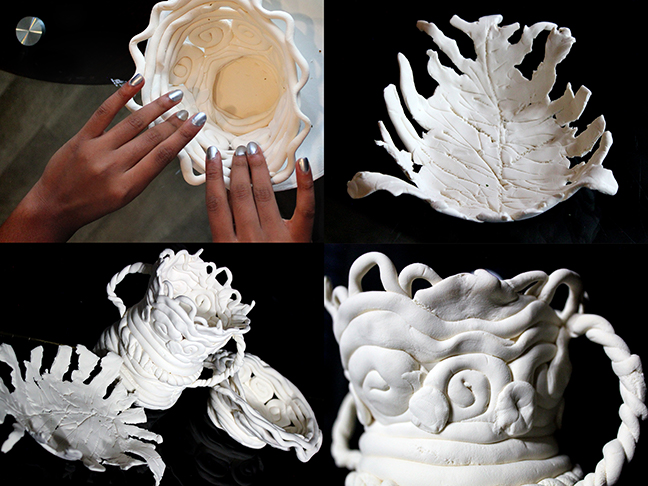

Air dry clay creations by visually impaired students
Interestingly, the 17-year-old artist is also a part of the team researching the impact of COVID-19 on visually-impaired kids, under Dr Penny Rosenblum, the Director of Research, American Foundation for the Blind. “I want to work towards a world that is inclusive, accessible, and safe for people with disabilities. I am also working on developing an interactive game app, that teaches visually impaired people mobility skills,” she signs off.

